Need to know how to care for air plants? If you’ve ever tried your hand at air plants, assuming the only care they need is air, we can bet you ended up with a sad or dead plant.
Today we’re going to go through everything you need to know about air plant care including how much light air plants need, how to water air plants and more!
Buying a new plant is so fun and always a little intimidating. From finding the right light source to ensuring you’re watering it appropriately, there’s a lot of actors to getting everything right to have success with your new plant!
I tried my hand at air plants a few years ago a made the mistake most people do. I didn’t water it! Needless to say, those died a quick death but now I know better!
Table of Contents
Air Plant Basics
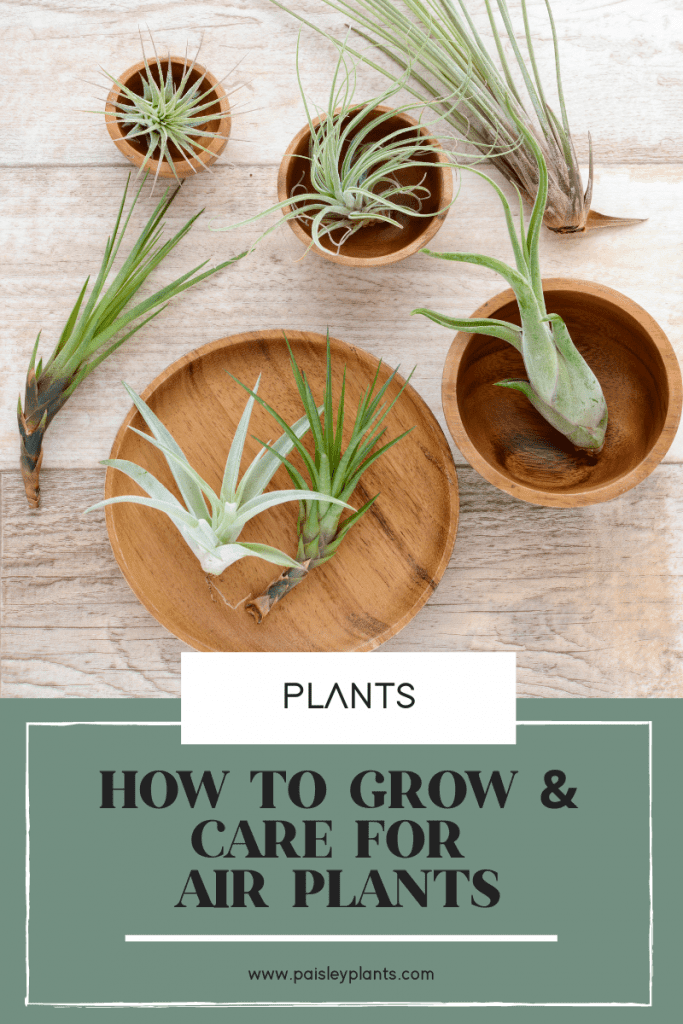
Paisley Plants is a participant in the Amazon Services LLC Associates Program, an affiliate advertising program. This post may include affiliate links which means I may earn a small commission if you shop using the links below at no additional cost to you.
The scientific name for air plants is Tillandsia. There are roughly 600 different air plant species. These are referred to as epiphytes, or plants that don’t grow in soil. These plants are part of the Bromeliad family which include other plants that don’t require soil to grow.
Air Plants in their natural habitat can typically be found attached to the bark of trees (sort of similar to how Monstera plants attach themselves to trees to climb upwards) as well as rocks.
They’re native to Central and South America, Mexico and southern United States. They’re typically found in forests, deserts and mountains.
Air plants don’t have a functional root system like most plants do. This means they’re not able to get nutrients through their roots. Instead, they get moisture and nutrients from the air around them.
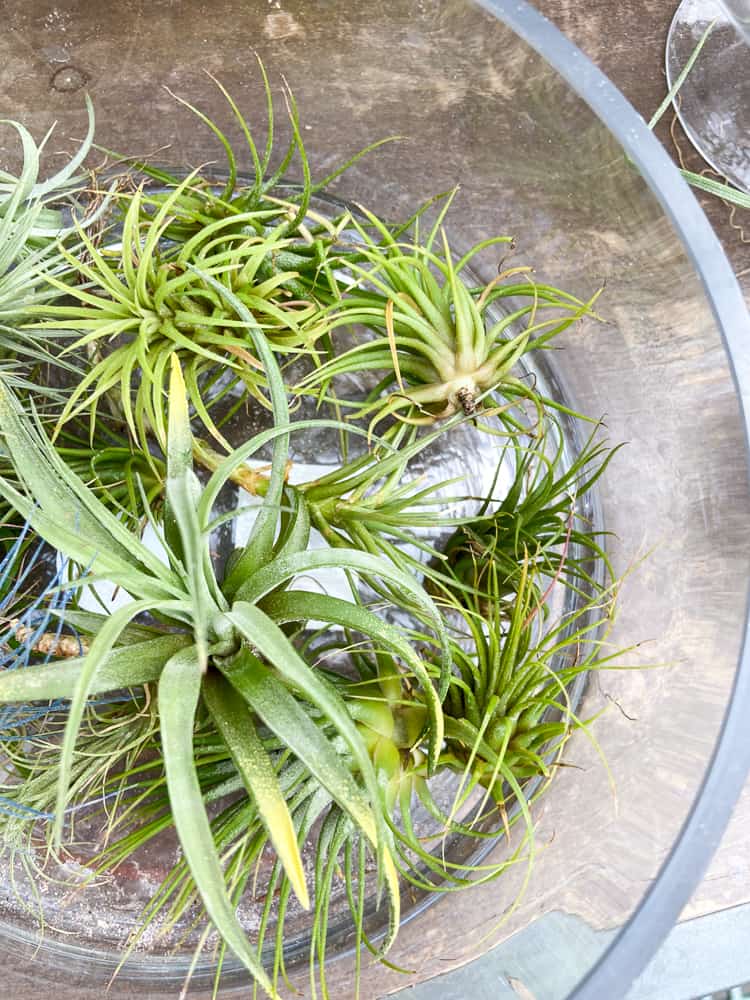
Air Plant Care Tips
Once you get the hang of how to care for air plants, we assure you that you’ll love them!
How to Water an Air Plant
Watering is truly the most confusing parts about air plants. Air plants only need air, right? Wrong. Air plants need water too!
There are two different ways that you can water your air plant. You can either mist it or soak it. Something to keep in mind when watering your air plant is the type of water you’re using.
When it comes to the type of water, this is super important. We always recommend using non-chlorinated water whenever possible. It’s best to not use tap water that hasn’t been neutralized.
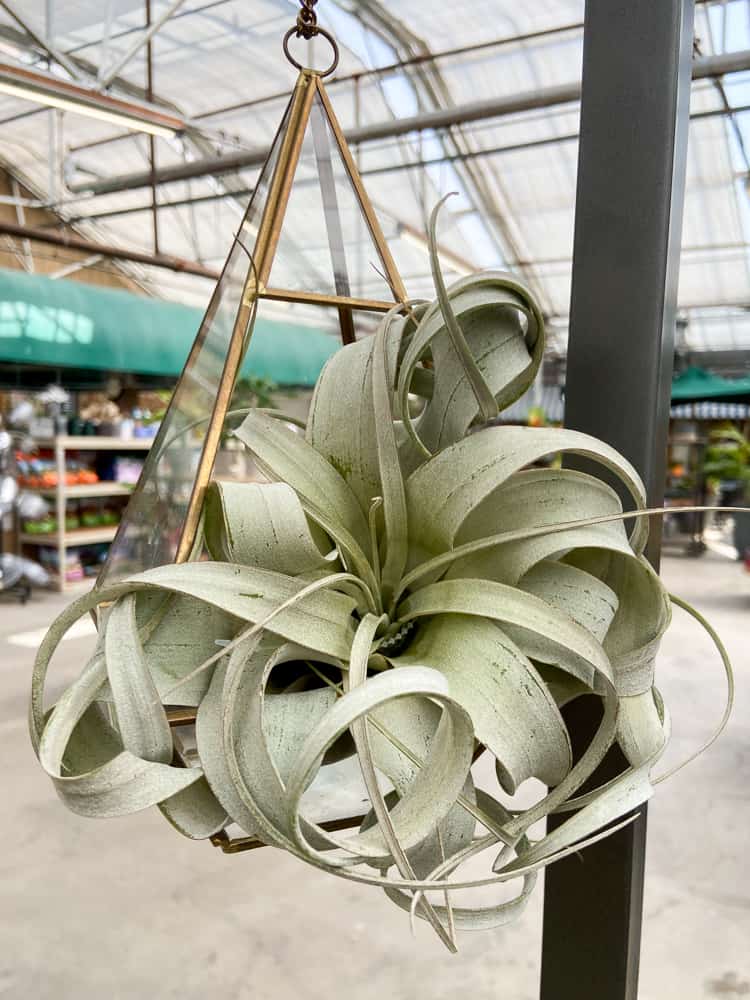
Tap water is fine if you neutralize it and it’s actually a super easy (and free!) process! The easiest way to do this is to simply fill up your watering can and leave it out overnight. This will evaporate the chlorine.
You can also use a chlorine neutralizer or charcoal water filters for a faster process. It’s good to have these on hand if you forget to leave your water out!
The other type of water you can use is pond water or rain water that’s been collected. This one is a bit more cumbersome but both are great options for watering your air plants!
Soaking an Air Plant
The best way to water your air plant is through soaking it. To do this, fill up a bucket (or bowl or sink or any type of basin) with water. Remember to let it sit out overnight to neutralize the chlorine.
Then, set your air plants in the water and give them a water bath! Leave them in the bowl of water for roughly 10-30 minutes. I know that time is a big time frame but this depends a bit on your specific plant.
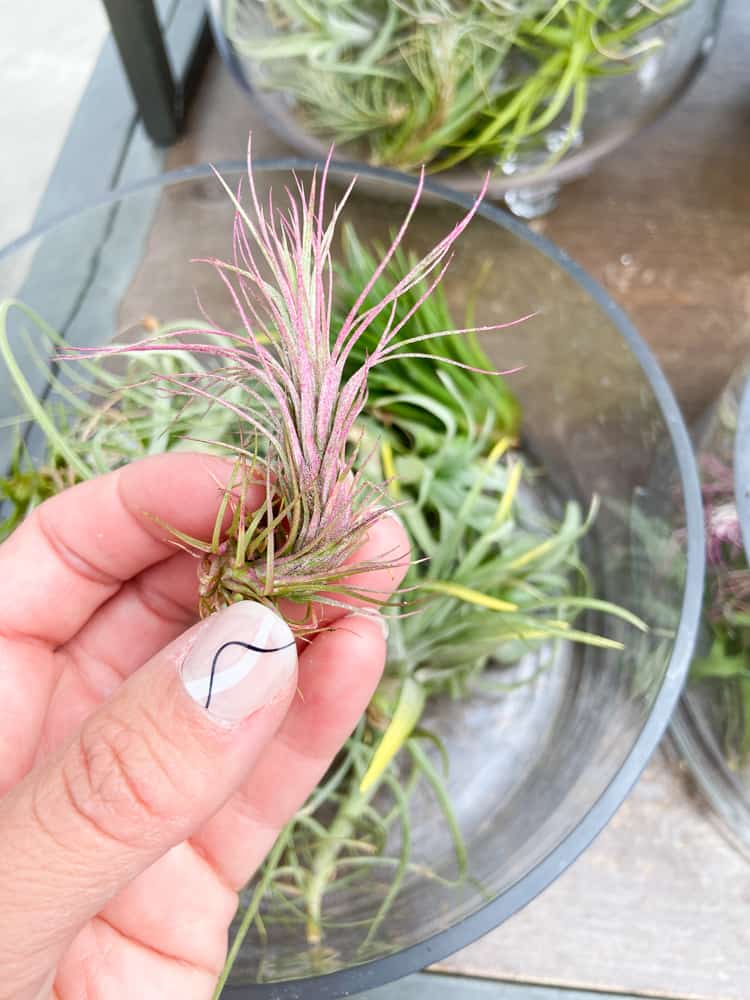
Just like one fiddle leaf plant needs just one cup of water and another fiddle leaf needs three cups of water, it’s hard to say with exact certain how long to soak your specific air plant.
Try out different times to see what your air plant likes the best! It may also need different lengths during the summer months vs the winter months.
If you’re short on time and can’t commit to a good soak, you can alternatively run them under running water for 30 seconds or so. Then follow the same instructions to dry them.
Air Drying Air Plants
After your air plant is done soaking, you’ll want to remove the excess water by air drying them. How you’re going to do this is to first lay out a towel or pull out a wire rack for them to sit on.
Even an old cooling rack (like the one you would use for cookies) is a great option for this! You want something that will give them as much good air circulation as possible.
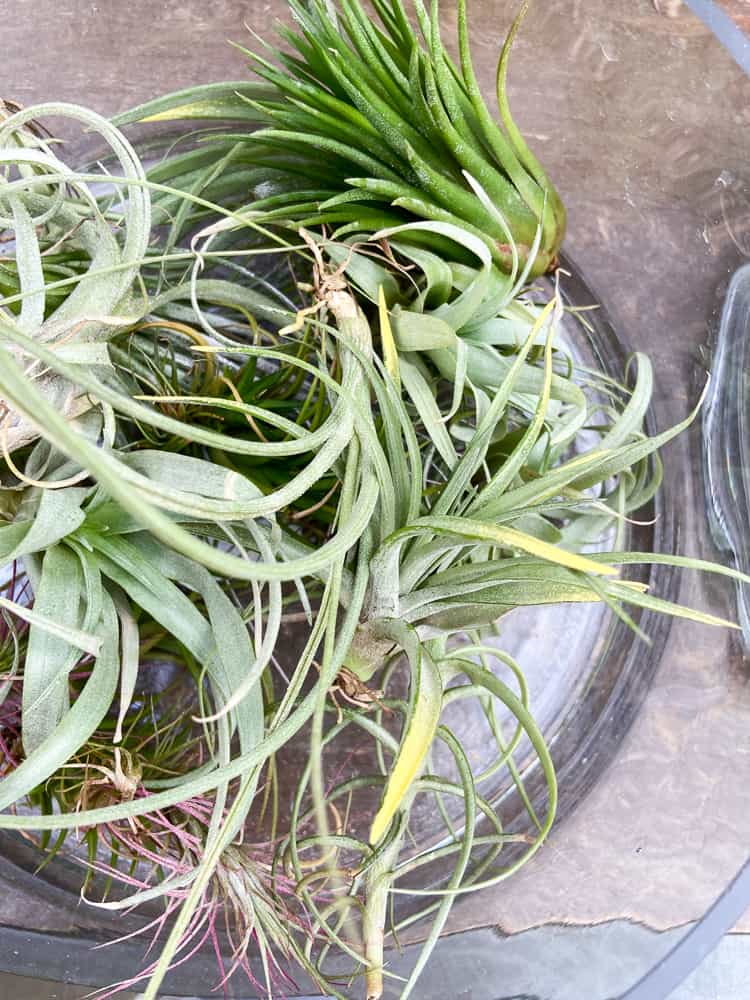
When you lay them out, put the bottom of the plant up or upside down. Be certain that your air plant doesn’t get water stuck in crevasses or the base of the plant. One of the easiest ways to kill an air plant is to over water it. Don’t let water get stuck inside the plant after soaking it or it could die!
Your air plant should be completely dry within 4 or 5 hours. If it airs out too quickly, it didn’t get to absorb enough of the water. This will clue you in if you need to soak it longer, if it dries out too quick or that the spot you let them dry out in had too much air circulation (was it near an open window or fan?).
Alternately, if you check on your air plant after 4 or 5 hours and it’s still soaking wet, put it near a fan to help it dry out quicker. You don’t want it to stay too wet for too long and begin to rot.
Misting an Air Plant
While some people swear by only misting their air plant, others argue it’s only appropriate to do in between soakings. However, you choose to use this method, whether it’s your main source of watering or supplemental to your soaking, it’s a great way to add moisture to your air plant.
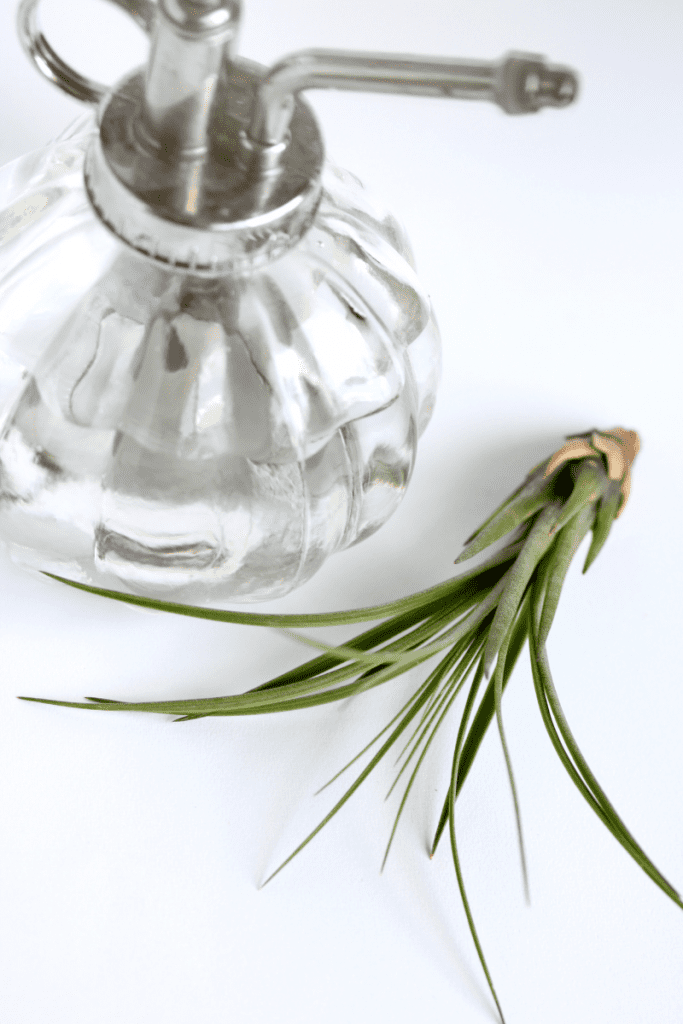
Misting your air plant is effective AND easy! All you need to do is pick up a spray bottle and fill it with distilled water. (Remember to use neutralized tap water, rain water or pond water to mist your plants.)
Then you’ll spray your air plant from all angles and directions making sure that the entire plant is wet. You’ll want to be sure that you thoroughly soak your air plant but not give it too much water that it won’t dry out, especially if you’re unable to remove it from its home to dry it out.
How Often to Water My Air Plant
Ideally you should soak your air plant about once a week. In addition to that, you’ll want to mist your air plant 3-7 days a week depending on how dry its environment is. Dry environments will obviously need more misting than a humid environment.
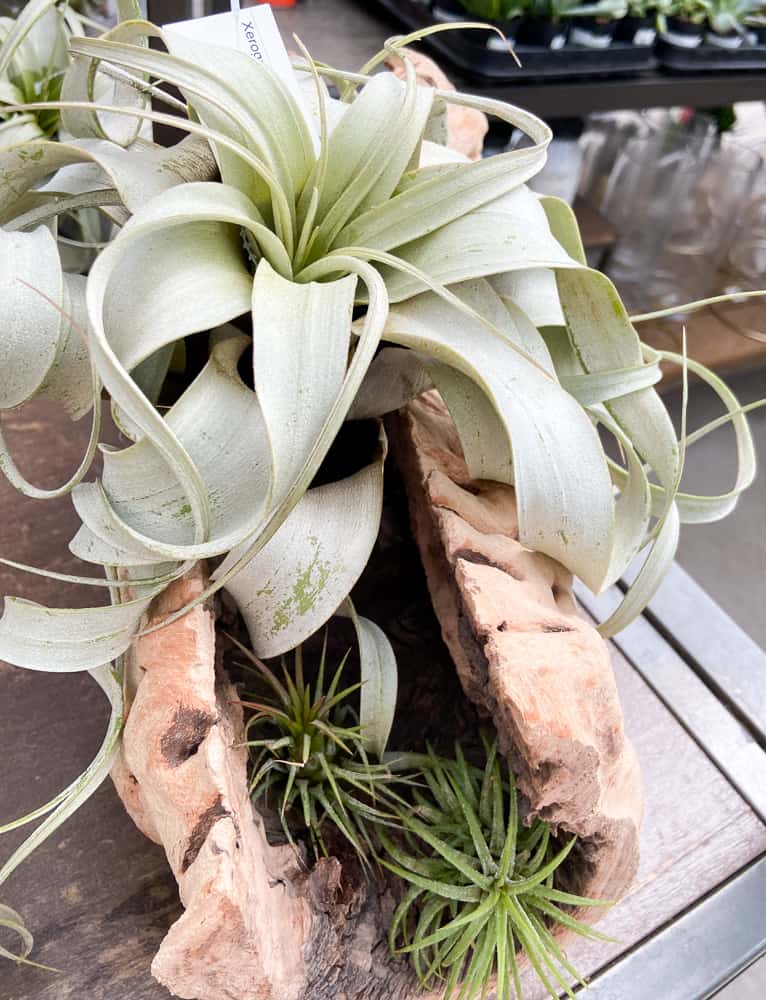
How Much Light Do Air Plants Need?
Let’s move on to light requirements. Having the right amount of light is key to a healthy air plant. You need to make sure that your indoor plants get enough light as they won’t do well in low light environments.
Air plants do best in bright, indirect sunlight. What does that mean? You’ll want to close to a window that gets bright light but make sure that it doesn’t get direct sun and that the sun is filtered through a curtain.
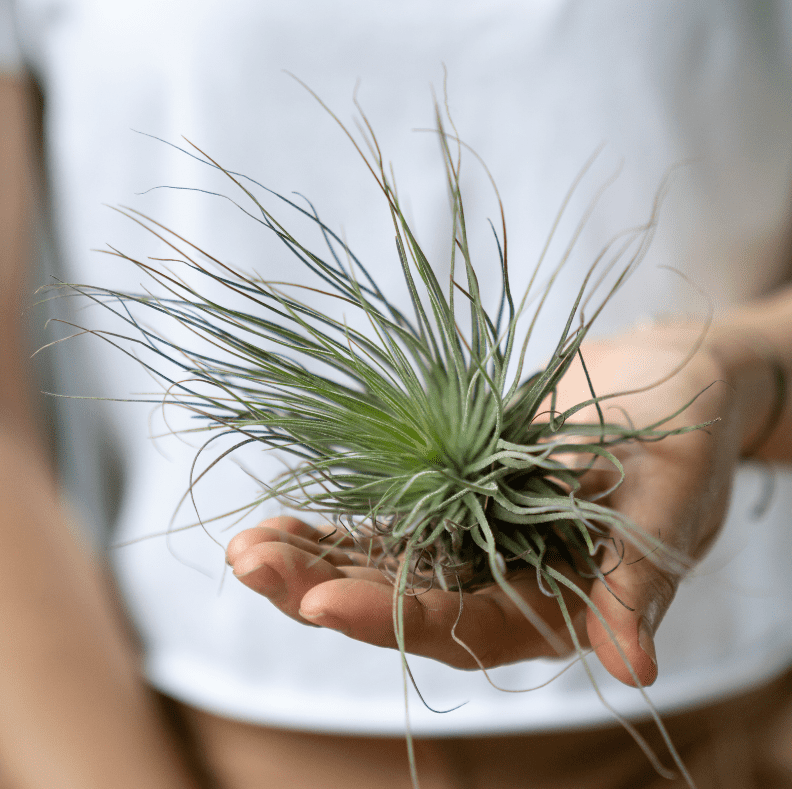
If an air plant gets too much direct sun, especially if you have them in a south-facing window in something like glass globes or glass terrariums, it could scorch them, and you don’t want that to happen! Too much direct sun can also deplete your air plant of moisture which will kill it.
The sunnier your spot is, the more misting you’ll need to give your plants.
Can You Use Artificial Light for Air Plants
When it comes to artificial lights, yes, you can use them as long as they are grow lights. Regular lights in your room won’t cut it unfortunately.
Grow lights can be used as your air plants only source of light or as supplemental light for when you need it. These lights need to be specific plant growing full-spectrum fluorescent or LED lights.
If you choose to use artificial lights for your air plants be sure to not put them further than 36” away and no closer than 6” close. You should also use a timer when using artificial lights and have them on for 12 hours a day if it’s your plant’s only source of light.
Temperature and Humidity
Air plants aren’t excessively picky about their temperature like some plants and can typically do fine anywhere between 50 to 90 degrees Fahrenheit. Stick within that optimum temperature range and your air plants will do just fine.
These plants also like more humid conditions. If your home doesn’t have high humidity be sure to keep them well watered.
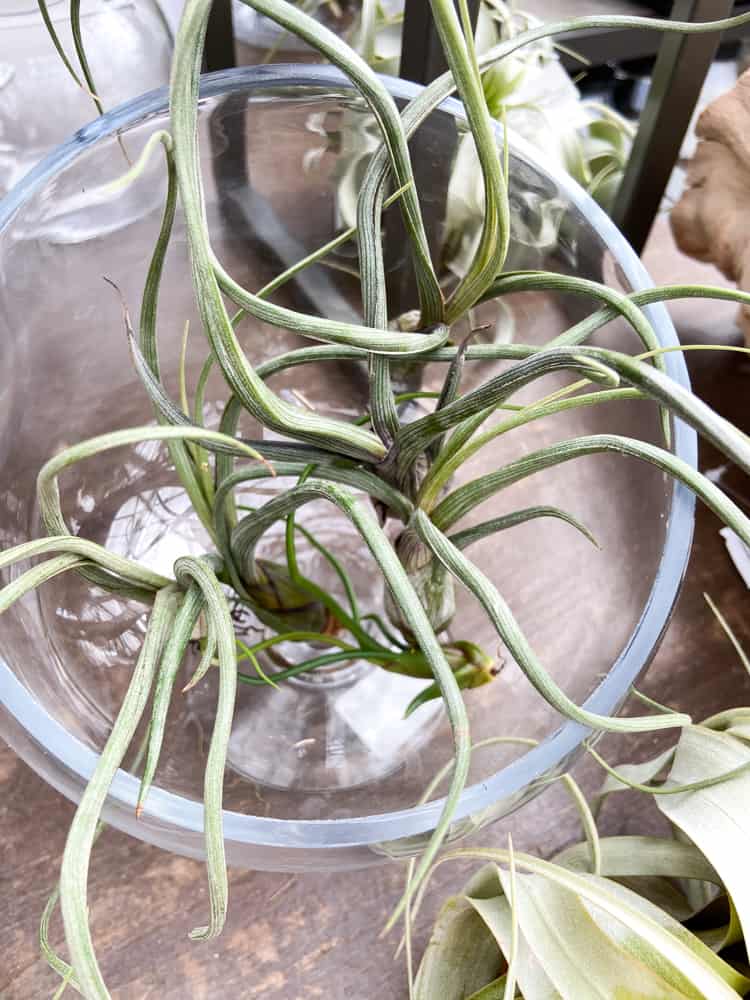
How Long do Air Plants Live?
Air plants have a different type of life cycle than many of the plants we talk about. These plants live for several years, not necessarily forever like some plants. However, they do produce pups that are attached to the main plant.
If you don’t remove the pups, your air plant will in theory live forever because the pups will continue to live and eventually produce their own pups!
One super interesting thing about air plants is that they only bloom once in their entire life. This is a good indication that they are at the peak of their life.
Air plant blooms can last from a few days up to a few months, depending on the type of species. This is when they turn beautiful shades of colors and have brightly colored flowers.
Pups
Around the time that they bloom, they’ll also begin to produce pups. Pups are the baby air plants or the offshoots. When you look at your air plant, you’ll see that the pup has a distinct center, so you’ll know which is the main plant and which is the offshoot.
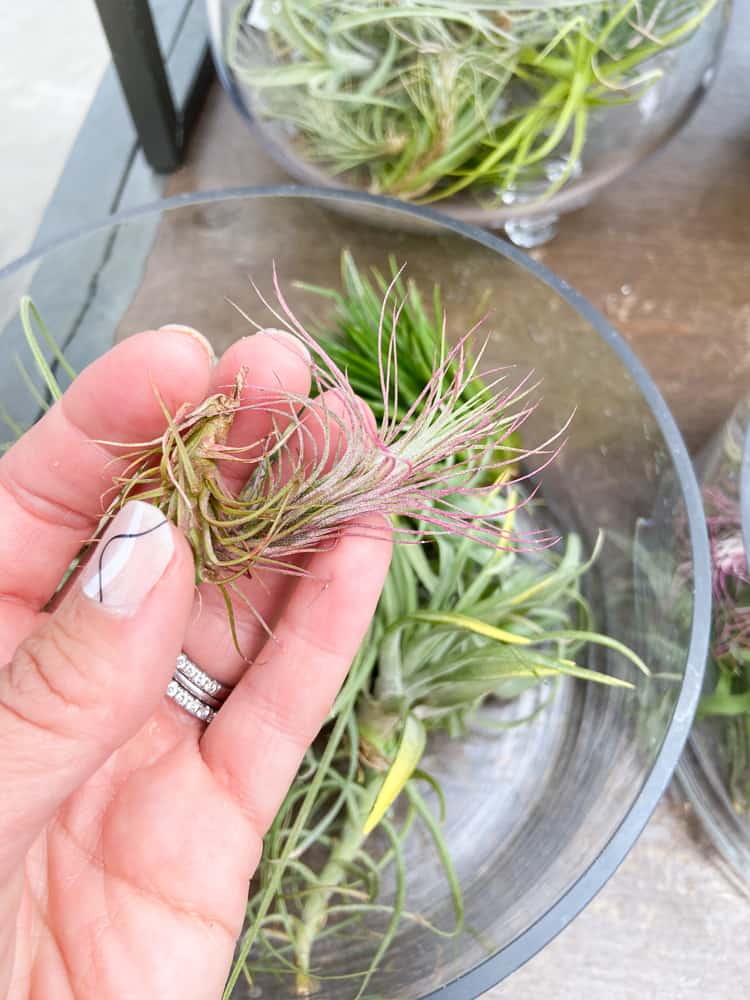
Air plants usually produce 1-3 pups. You can either leave these pups attached to the mother plant or remove them after they get to be about 1/3 of the size of the mother plant. The pups will continue to grow even if the main plant dies.
Removing the pups is fairly simple. All you need to do is gently hold both the base of the mother plant and the base of the pup and gently twist in a downward motion. This should easily remove the pup from the parent plant.
If the pup doesn’t pop off, you can use a sharp knife and gently cut downwards, removing it from the mother. After the pup is removed don’t throw out the mother plant unless it’s dead. Air plants will continue to create pups for a while after it blooms.
Where to Put Air Plants
Air plants can live just about anywhere. You’ll see them lying out on trays on coffee tables, mounted on to wreaths, hanging in bathrooms, and so much more.
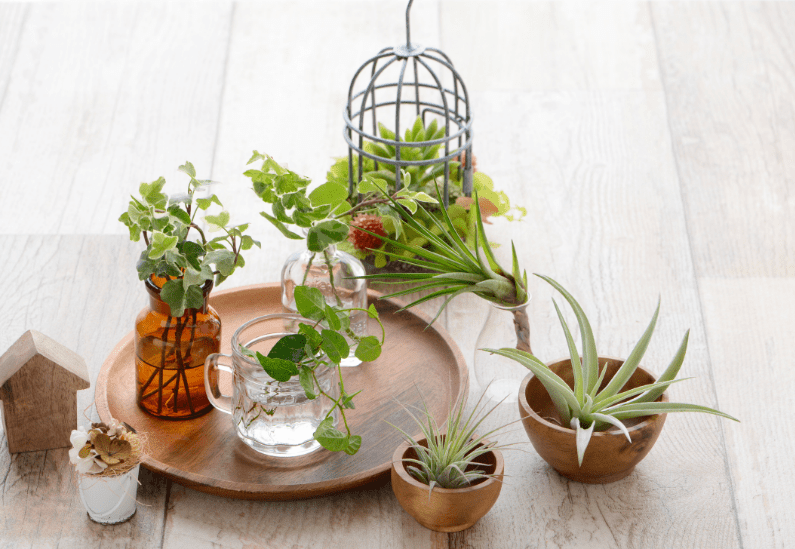
Mounting Air Plants
Because air plants don’t need soil to live, they can be mounted to almost any type of surface you want! Just remember that you’ll still need to water your air plant so put it in a spot that’s relatively easy to get to and can withstand some spraying.
If you chose to mount your air plant you can use things like fishing line, wire or twine to attach it. Another really popular option is using E6000 waterproof glue. Yes, glue!
If you use glue all you need to do is put a little dot of glue on to whatever you’re using to mount your air plant and press your air plant gently on to the glue. If you have heavier plants, you may need to also secure it with a bit of wire.
Terrarium Air Plants
One super popular way of displaying air plants is in a terrarium! Glass terrariums are a beautiful way to display your air plant.

There are so many different types of terrariums from hanging ones to ones you set on a shelf. You can use so many different things for the base of your terrarium making the look and style of it completely unique.
You can use colored sand, rocks, seashells, moss, bark, etc for the base. Basically, anything except soil because remember, air plants don’t need soil to grow!
When it comes to caring from air plants in a terrarium, it’s the same as above. You’ll want to be sure to remove the air plant for soaking and misting (misting it in the terrarium could end up in a mess!).
Something to note when it comes to watering them. Air plants that live in terrariums often need less water because they aren’t getting as much air circulation as open air plants.
Where to Buy
So there you have it! We’ve solved the mystery of air plants. Just because air plants don’t need soil, doesn’t mean they don’t need other basic nutrients!
A good amount of distilled water through soaking or misting along with bright indirect light will keep your air plants healthy and happy.
House plants don’t need to be stressful or hard. It’s all a big learning process and should be fun! Stick around as we share even more care tips and tricks for all sorts of plants.

